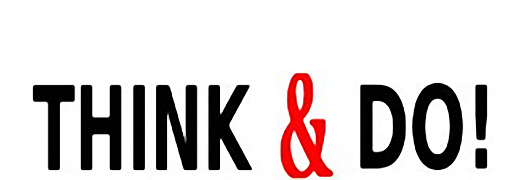Think & Do!
The Sales & Counselor Selling Series
“I can see that there’s a lot going on here, General, but does it make any sense?”
– Dr. Stephen Falken
“War Games”
What happened? Is this the ultimate outcome of the 60’s rebellion?
Following the rules — well that’s a little old fashioned… More like discarding them entirely! Much of what passes for “Pop Culture” today is “stew;” a little razzle-dazzle, a few story-bits stuck together, some attitude and maybe even an idea; Presto! Movies, Politics, and Economics are all reduced to bluster — on all channels. So what if it doesn’t have a point, a structure, a clear suggestion for a next step or any relevance for a particular listener/audience? There’s a lot going on here, no doubt. But does it make any sense?
The results of this overall “cultural dissolve” are Entertainment that doesn’t entertain, Politics that fails to serve or solve; Economic theory and practice that aren’t economical. Ladies and Gentlemen, we suggest that the “starch” has gone out of our culture! In the rush to break the rules and freely express ourselves, we’ve also discarded the underlying principles which have for a long time served as the “skeleton under the skin” of our remarkably successful culture. We think it’s high time to reconsider some of what’s missing in contemporary culture.
A number of our clients have begun to suffer the “starch problem.” They’ve been casting off the component parts of “Ready, Set, Go!®” in the interest of “uniqueness, personal style” and speed. So instead of starting by thinking about the objective: (the action they want the audience to take) they stride boldly ahead, also discarding the audience analysis as they start doing by putting their thoughts (every last one of them) onto paper. While they’re about it, they ingeniously figure out how to reduce the font size on the diagram so that every last word of every last thought can be included on a single 13 box diagram. When complete, the final product has no desired outcome, no structure, no focus on the audience and no internal logic or structure. (Oh, and the entire document comes in at a readable 8-point font! Incredibly helpful for sight reading the script!) There’s a lot of doing going on here, but does it make any sense?
If you’re discovering that your collar (or your communication) has gone limp and shapeless, perhaps a little starch is all that’s required… Consider a return to the basics of clear communication.
“Ready, Set, Go!®”
1. Establish Objective: What do you intend/desire the audience to do?
(This manifests in the box diagram as the Next Step.)
2. Analyze Audience: Why will they do it?
(This manifests in the box diagram as the Main Idea.)
3. Organize Remarks: “Working Backward” from the end to the beginning, in note form only; fill in the remainder of the box diagram. Finish your composition by polishing the opening.
It’s enticing to discard establishing an objective, but without knowing what you want them to do; how can one “aim” and decide what to ask? Without an audience analysis, how can one decide which ideas are germane and which are simply gross weight? Which details must be included and which are simply fill dirt? Without a simple internal structure and a disciplined flow, how can we track you or recall what you’ve said? We’re left with lots of detail, lots of information — but little wisdom and no direction. Form but no substance. Flavor but no satisfaction. A presentation with no “Starch.”
Together, the three disciplines of “Ready, Set, Go!” provide an unerring guide to a presentation with a point, a desired outcome, relevance for the audience, and a trackable/recallable structure. The rules about transitions, grammar, movement, gestures, and visual aids can be bent or even broken; but these principles are both self-evident and sacred. Don’t waste your listener’s time: Put some “starch” back in your communication and don’t open your mouth unless you’ve thought through the result!
Sure, you can mount up and Go! But Where? With whom? Why? And by what path? You’ve got a lot to say but it’s got to make sense. Show a little starch. Think first, then do!
Applications
1. Personal
Maybe it’s a picnic with a spouse — or a proposal to a paramour or a discussion about a favorite movie. Whatever the subject, your communication can be merely about self-expression. But who needs an audience? If you’re talking with people, consider the audience and their unique point of view, then edit your ideas to the few that are both germane and persuasive. Do the world a favor, speak less; and persuade more.
1. At Home
Watching your kids make wreckage of the principles you deem sacred — while they gleefully break the rules? It’s part of parenting. But help them make the distinction between “following the rules”: form, and honoring principle: formless. Breaking the rules has always been a part of making your unique path. But honoring the enduring principles has been equally important to preserving the value and substance that make us one family of mankind.
3. At Work
It seems so convincing: Get to it! Skip all the preliminaries and get your thoughts down on paper! Don’t waste time, start writing! Yeah, you’ll get everything on paper all right; everything! But when your pen starts to slow down, you may discover that you’ve dispensed with all the discipline that makes the difference between well organized “Idea Soup” and a genuine persuasive presentation. Business communication is rarely about self-expression. It’s business! It’s about moving someone to action! Get Ready, and Set, before you Go!
A little starch goes a long way. Think first! Then Do! “Ready, Set, Go!®”
Subscribe to our Newsletter


